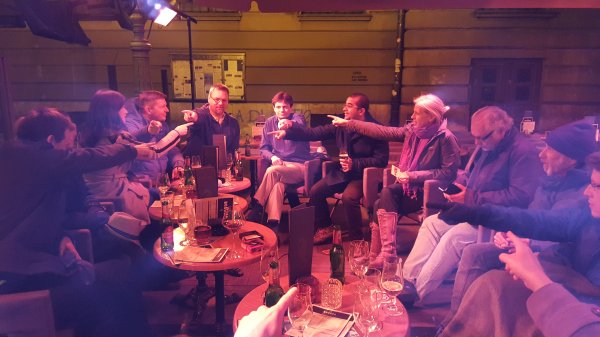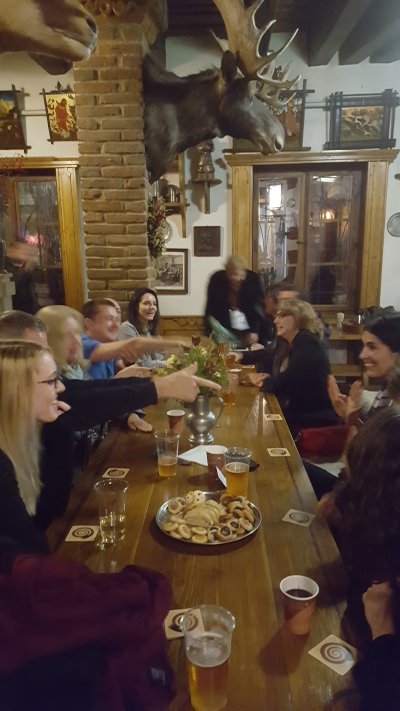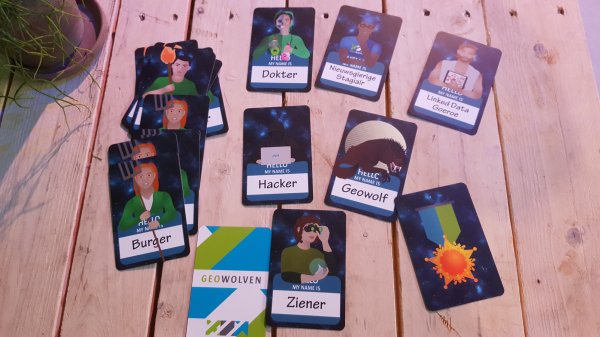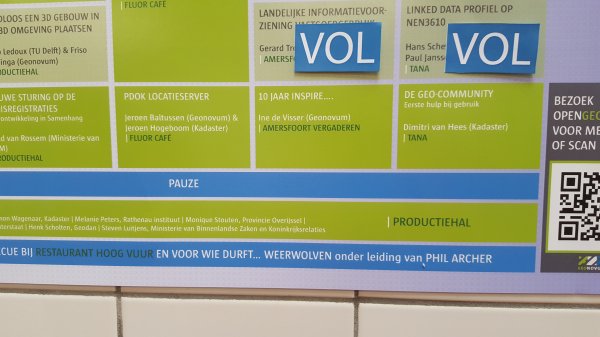Werewolf

I first played Werewolf at a W3C TPAC meeting in Lyon and I’m pretty sure I can give the specific date: Tuesday 2nd November 2010, right after the AC dinner where I had sat with Dan Appelquist. It was he who, having received the message from ‘God’, enthusiastically encouraged me to join in. Ever since, I have played it whenever opportunity arose. At subsequent TPAC events around the world, obviously, but I have also introduced it to the Open Geospatial Consortium, (Dutch national geospatial standards body) Geonovum, and most recently, at GS1. I’ve run games under the stars on the Greek island of Samos, on the chilly streets of Zagreb, and in hotel bars from Lisbon to Timişoara, from Brussels to Prague.
What is it about this game?

OK, the basics. Werewolf, a.k.a Mafia, has a strong pedigree in academia and tech industry meetings. The specific version I play is the Werewolves of Millers Hollow. You need 10-20 players plus a game master. The game master assigns each player a role by giving them a card. Most will be simple villagers, but a small number will be a werewolf. Under direction from the game master, the village goes through day/night cycles (eyes open/eyes closed) and, at night, the Werewolves silently kill a villager. The next day, the villagers must try and identify a werewolf who is then lynched (killed). One by one, players are thus eliminated. The game is enriched by additional characters and a bit of showmanship by the game master.
If you have enjoyed playing it with me as game master, I’m pleased, but I cannot take credit. That goes to the ultimate ‘God’: Dominique Hazaël-Massieux, known to one and all as Dom. I don’t know how much he was taught and how much he added himself, but he is brilliant at it and if you ever get the chance to play a game run by him – take it.
The game itself is huge fun. In the early rounds you have absolutely no information to go on. Accusations are based on the flimsiest of made up reasons – which is why it works. Analysis and logic only comes in to the later rounds. Players need to work together by consensus – hence the close fit with standards development work. Once out of the game, players are often assigned the necessary role of going to the bar on behalf of the others.

But it achieves much more than giving people a laugh – it makes connections. At big conferences, it’s all too easy to stick to a small group of people you know. I only met the likes of Robin Berjon (editor of the then emerging HTML5 standard), Doug Sheppers (data visualisation specialist) and more through playing the game with them. I ran a 2.5 year project designed to create a network across European governments, Werewolf certainly helped to create that network. That’s why an important part of the set up of the game is the name game. Before the game starts, you ask someone to give their name. Then you ask the person next to them what that first person’s name is before giving their own name. Person 3 then has to name persons 1 and 2 before giving their name and so on until at the end, the last person names everyone.
As an aside, unlike others I’ve played the game with, GS1 folk often give made up names, or swap names with friends. If you give your name as Gigi or Winston – that’s what others must call you called throughout the game.
One occasion deserves special mention. I was invited to speak at Geonovum’s Geo Data Day in Amersfoort this year. Yes, OK, I was able to give a talk on the joint work between W3C and OGC but really I was there to run the werewolf game in the evening. The Geonovum team produced a customised set of playing cards and even put the game on the agenda.


As I write, the W3C folks are gathering in San Francisco for TPAC 2017. I know for sure that werewolf will be a big part of most evenings in that hotel. Although I won’t be there, I’ll be thinking of that gathering and acknowledging my debt to Dom and TPAC as I recall that a few days ago, GS1 enjoyed a couple of cracking good games at a fake mediaeval castle on the outskirts of Prague. The date? Why, Halloween of course.